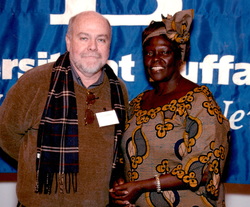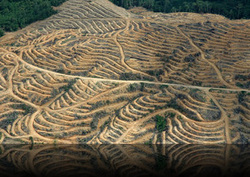Habitat and Stewardship
The earth's habitats are interlinked ecosystems that are diverse, resilient, and fragile. A habitat is a place that provides food, shelter, and often water for the species that depend upon it. A habitat can be large, like and ocean, or tiny, like the inside of your intestine, or smaller. Each habitat and each ecosystem are interdependent. Understanding Ecosystems and habitats and learning how to best protect them is a sustainable objective that humanity is barely aware of and as a result, we are loosing the battle. throughout history billions of species have evolved on this planet. Today 99.9% of those species have gone extinct. Today we are undergoing an extinction episode that may be unparalleled in the history of the planet. Each of us must do more if we are to protect the planet for future generations. This page will evolve over time and we hope that you will contribute to the content and comments. Email us with your thought: lscampaign@aol, or join in the conversation at GreenWatch
Wangari Maathai and the Green Belt Movement Nobel Peace Prize Laureate and Learning Sustainability Founder Jay Burney
In 1997 Wangari Maathai established the Green Belt movement in Africa as a program of the National Council of Women of Kenya. The mission of this grassroots non-governmental organization based in Nairobi was to focus on environmental conservation, community development and capacity building. It was organized to plant trees, one of earths vanishing and most precious resources. Over 30,000 women have been trained in forestry, food processing, bee-keeping and other trades which help them to have an income and preserve lands and resources. Over 40 million trees have been planted. In 2006 Professor Mathaai won the Nobel Peace Prize for her work.
|
Links and ResourcesThe Green Belt Movement
WomenAide Inernational--Reforestation in Kenya International Union for Conservation of Nature IUCN IUCN RED LIST-Comprehensive list of threatened and endangered species RAMSAR Convention- International Treaty on the Conservation of Wetlands Center for Biological Diversity Zoological Society of London (ZSL) Living Planet Index CITES-Convention on International Trade in Endangered Species of Wild Fauna and Flora Marine Conservation Biology Institute Xerces Society- Invertebrate Conservation Partnership for Biodiversity Informatics Natural Resources Defense Council |
Palm Oil!

Palm Oil is the source of some of the earth's most catastrophic ecological and social disasters. The development of palm oil plantations in Africa, and Central and South America is responsible for massive deforestation of rain forests (and carbon emissions) , and for human rights abuses including the enslavement of children. Why- Palm Oil is valuable as one of the most widely used food additives. According to an article in Alternet written by Jill Richardson, Palm Oil is found in half of all packaged foods and in body care and cleaning products. It is identified on ingredient lists as palmitate, palmate, sodium laureth sulphate, sodium lauryl sulphate, glycerl stearate, or stearic acid. It even turns up in so-called "natural", "healthy", and "cruelty free" products like Earth Balance vegan margarine, Newman-O's Oreo cookies, and in "renewable biofuels.
Source: Worst Food Additive Ever? It's in Half of all Foods We Eat and Its Production Destroys Rainforests and Enslaves Children/Alternet:
Source: Worst Food Additive Ever? It's in Half of all Foods We Eat and Its Production Destroys Rainforests and Enslaves Children/Alternet: